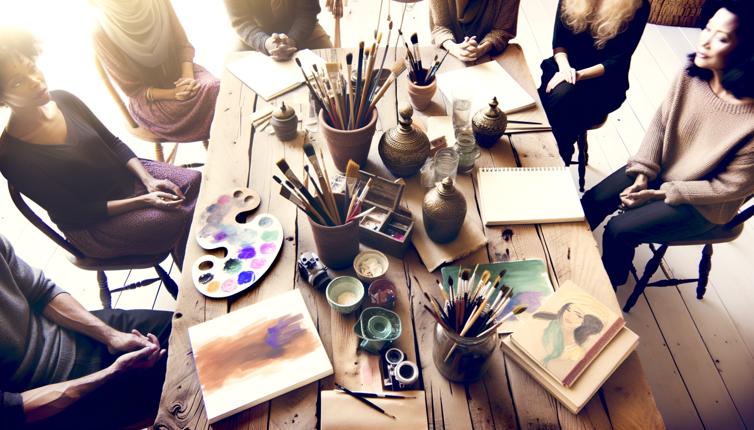Understanding the Elements
The first step in choosing the right elements for your fine art piece is to understand what the different elements are. These include line, shape, form, color, texture, space, and value. Each element has its own unique characteristics and can convey different emotions and moods.,Line: Lines can be straight, curved, or abstract, and can create a sense of movement, direction, or stability in your piece.,Shape: Shapes are two-dimensional and can be geometric or organic. They can create a sense of unity or contrast in your piece.,Form: Forms are three-dimensional and can be created through the use of light and shadow. They can add depth and volume to your piece.,Color: Color can evoke different emotions and can create a sense of harmony or contrast in your piece.,Texture: Texture can be visual or tactile and can add interest and depth to your piece.,Space: Space refers to the area around, between, or within the elements in your piece. It can create a sense of depth or emptiness in your piece.,Value: Value refers to the lightness or darkness of a color and can create a sense of depth and contrast in your piece.
Considering the Theme and Message
Once you have a good understanding of the different elements, it's important to consider the theme and message of your fine art piece. What do you want to convey to the viewer? What emotions or ideas do you want to evoke?,For example, if your theme is nature and your message is peace and tranquility, you may want to choose elements such as curved lines, organic shapes, cool colors, and soft textures. These elements can help create a sense of calm and serenity in your piece.,On the other hand, if your theme is chaos and your message is disruption, you may want to choose elements such as jagged lines, abstract shapes, bold colors, and rough textures. These elements can help create a sense of unease and tension in your piece.,By considering the theme and message of your piece, you can choose elements that support and enhance your intended meaning.
Creating Balance and Unity
Another important aspect to consider when choosing elements for your fine art piece is balance and unity. Balance refers to the distribution of visual weight in your piece, while unity refers to the overall sense of harmony and cohesion.,To create balance, you can use elements such as symmetry, repetition, and contrast. Symmetry can create a sense of stability and order, while repetition can create a sense of rhythm and movement. Contrast can create a sense of tension and interest.,To create unity, you can use elements such as color schemes, complementary shapes, and consistent textures. Color schemes can create a sense of harmony and cohesiveness, while complementary shapes can create a sense of balance and unity. Consistent textures can create a sense of continuity and flow.
Conclusion
In conclusion, choosing the right elements is essential for creating a cohesive fine art piece. By understanding the different elements, considering the theme and message, and creating balance and unity, you can create a piece that effectively communicates your intended meaning and resonates with viewers.









